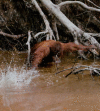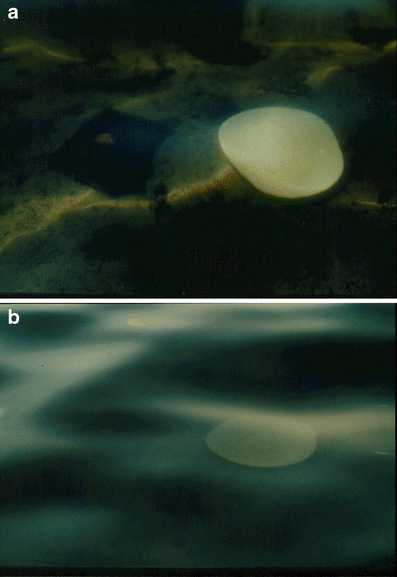The evolution of the upright posture and gait--a review and a new synthesis
- PMID: 20127307
- PMCID: PMC2819487
- DOI: 10.1007/s00114-009-0637-3
The evolution of the upright posture and gait--a review and a new synthesis
Abstract
During the last century, approximately 30 hypotheses have been constructed to explain the evolution of the human upright posture and locomotion. The most important and recent ones are discussed here. Meanwhile, it has been established that all main hypotheses published until the last decade of the past century are outdated, at least with respect to some of their main ideas: Firstly, they were focused on only one cause for the evolution of bipedality, whereas the evolutionary process was much more complex. Secondly, they were all placed into a savannah scenario. During the 1990s, the fossil record allowed the reconstruction of emerging bipedalism more precisely in a forested habitat (e.g., as reported by Clarke and Tobias (Science 269:521-524, 1995) and WoldeGabriel et al. (Nature 412:175-178, 2001)). Moreover, the fossil remains revealed increasing evidence that this part of human evolution took place in a more humid environment than previously assumed. The Amphibian Generalist Theory, presented first in the year 2000, suggests that bipedalism began in a wooded habitat. The forests were not far from a shore, where our early ancestor, along with its arboreal habits, walked and waded in shallow water finding rich food with little investment. In contrast to all other theories, wading behaviour not only triggers an upright posture, but also forces the individual to maintain this position and to walk bipedally. So far, this is the only scenario suitable to overcome the considerable anatomical and functional threshold from quadrupedalism to bipedalism. This is consistent with paleoanthropological findings and with functional anatomy as well as with energetic calculations, and not least, with evolutionary psychology. The new synthesis presented here is able to harmonise many of the hitherto competing theories.
Figures







Similar articles
-
Origin of human bipedalism: The knuckle-walking hypothesis revisited.Am J Phys Anthropol. 2001;Suppl 33:70-105. doi: 10.1002/ajpa.10019.abs. Am J Phys Anthropol. 2001. PMID: 11786992 Review.
-
New fossils of Australopithecus sediba reveal a nearly complete lower back.Elife. 2021 Nov 23;10:e70447. doi: 10.7554/eLife.70447. Elife. 2021. PMID: 34812141 Free PMC article.
-
Acquisition of bipedalism: the Miocene hominoid record and modern analogues for bipedal protohominids.J Anat. 2004 May;204(5):385-402. doi: 10.1111/j.0021-8782.2004.00290.x. J Anat. 2004. PMID: 15198702 Free PMC article. Review.
-
Locomotion and posture from the common hominoid ancestor to fully modern hominins, with special reference to the last common panin/hominin ancestor.J Anat. 2008 Apr;212(4):501-43. doi: 10.1111/j.1469-7580.2008.00870.x. J Anat. 2008. PMID: 18380868 Free PMC article. Review.
-
Arboreal bipedalism in wild chimpanzees: implications for the evolution of hominid posture and locomotion.Am J Phys Anthropol. 2006 Feb;129(2):225-31. doi: 10.1002/ajpa.20284. Am J Phys Anthropol. 2006. PMID: 16288480
Cited by
-
Does bipedality predict the group-level manual laterality in mammals?PLoS One. 2012;7(12):e51583. doi: 10.1371/journal.pone.0051583. Epub 2012 Dec 12. PLoS One. 2012. PMID: 23251583 Free PMC article.
-
Music as aposematic signal: predator defense strategies in early human evolution.Front Psychol. 2024 Jan 16;14:1271854. doi: 10.3389/fpsyg.2023.1271854. eCollection 2023. Front Psychol. 2024. PMID: 38298362 Free PMC article.
-
Early Holocene morphological variation in hunter-gatherer hands and feet.PeerJ. 2018 Sep 5;6:e5564. doi: 10.7717/peerj.5564. eCollection 2018. PeerJ. 2018. PMID: 30202658 Free PMC article.
-
Beyond Mindfulness: Buddha Nature and the Four Postures in Psychotherapy.J Relig Health. 2016 Oct;55(5):1585-95. doi: 10.1007/s10943-015-0169-4. J Relig Health. 2016. PMID: 26661827 Review.
-
Fat infiltration of the posterior paraspinal muscles is inversely associated with the fat infiltration of the psoas muscle: a potential compensatory mechanism in the lumbar spine.BMC Musculoskelet Disord. 2023 Oct 27;24(1):846. doi: 10.1186/s12891-023-06967-w. BMC Musculoskelet Disord. 2023. PMID: 37891498 Free PMC article.
References
-
- Altmann J, Samuels A. Costs of maternal care: infant-carrying in baboons. Behav Ecol Sociobiol. 1992;29:391–398.
-
- Appleton J. The symbolism of habitat. An interpretation of landscape in the art. Seattle: University of Washington Press; 1990.
-
- Ardey R. African genesis. New York: Dell; 1961.
-
- Aspöck H, Walochnik J. Die parasiten des menschen aus der sicht der koevolution. Denisia 20. NS. 2007;66:179–254.
-
- Badrian NL, Malenky RK. Feeding ecology of Pan paniscus in the Lomako forest, Zaïre. In: Susman RL, editor. The pygmy chimpanzee—evolutionary biology and behavior. New York: Plenum Press; 1984. pp. 275–300.
MeSH terms
LinkOut - more resources
Full Text Sources
Miscellaneous

